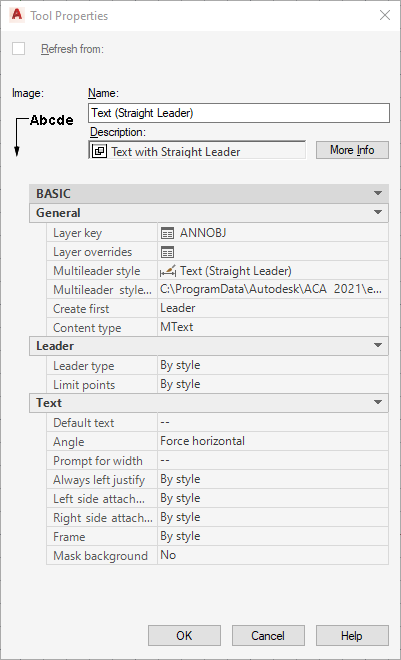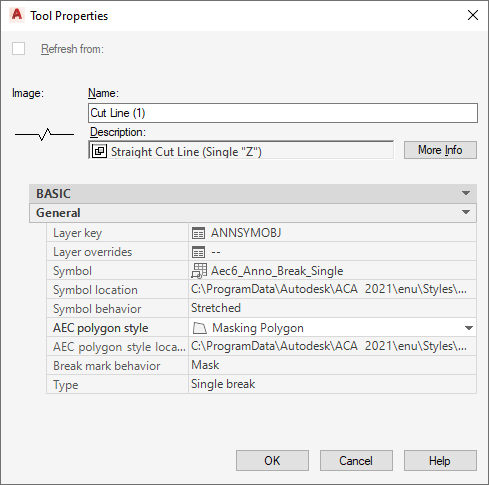Palette-based tools, combined with tool catalogs, offer an effective means of distributing and standardizing content, as well as automating insertion and creation parameters.
General Best Practices for Palette-Based Tools
- All annotation content should be created to take advantage of the annotation plot size.
- Tools should normally be saved in a catalog. That way, if the palette on which they exist in the user’s workspace gets inadvertently deleted, the tool can be restored from the original palette.
- When creating palette based tools, make it a habit to look for automation opportunities. With the exception of tools for AEC content, there are a variety of properties that can be pre-configured to further automate and standardize object creation.
- If you have a need for callouts that use different graphic qualities, you can limit the number of actual tools that you create by taking advantage of dynamic blocks. The disadvantage to doing this, however, is that you may lose some standardization, as the same callout tool could have multiple bubbles in the same drawing by simply changing the view state parameter of the callouts after they’ve been inserted.
- Store schedule tags in the same file as your schedules and property set definitions. While this is not technically necessary in order for them to work properly, it makes editing them easier.
- Text and labels in schedule tags should be MTEXT objects. MTEXT that links to a property definition will automatically be converted to a properly formatted attribute definition.
- Carefully consider the tool properties for leaders. There are several pre-sets that can make creating a simple leader much less time consuming and more standardized.

- If you create tools for standard AutoCAD dimensions, use the AEC Content Wizard to do so. That way you can use the Custom Command option and use layer keys to make sure that the dimensions go to the correct layer.

- Break line tools should have supporting elements stored in the same drawing as the break line symbol. As with other multi-component tools, such as schedule tags, it makes them easier to modify in the future. All of the properties for break marks are set in the tool properties, including whether or not the break mark masks or trims objects.

- Title blocks should be stored in a sheet template drawing rather than as a separate drawing.
- Use MTEXT objects instead of attribute definitions in your title blocks. When you include fields in an MTEXT object, it will word-wrap where necessary.
Tip: The title blocks that are provided in the AutoCAD Architecture 2022 Toolset sheet templates are NCS compliant. You may want to consider beginning with them and making modifications to suit if you are planning to comply with that standard.